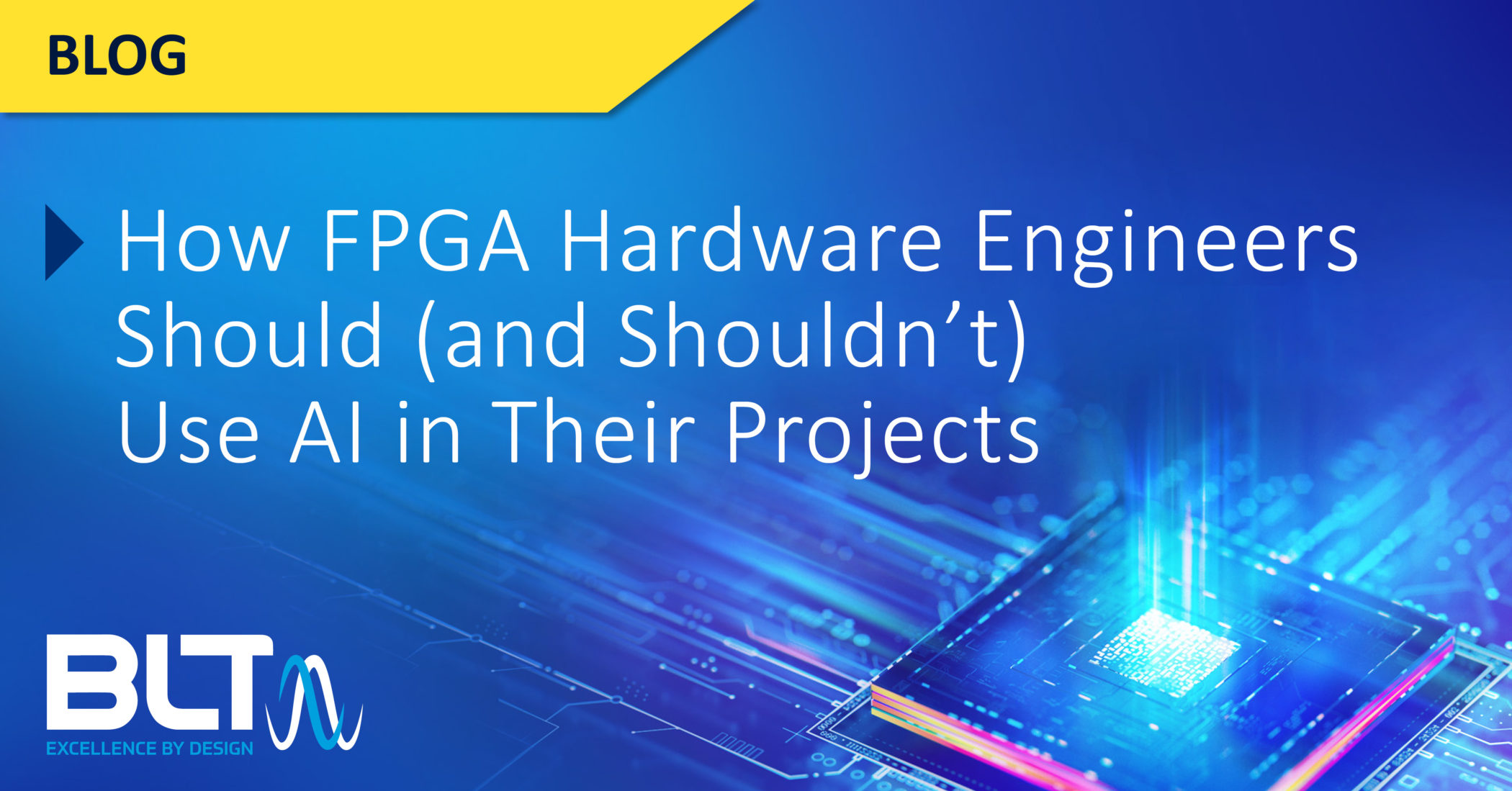AI is making waves in engineering, and FPGA & embedded hardware teams are no exception. From automating routine tasks to speeding up research, AI can be a powerful assistant, but it’s not a substitute for deep expertise. In FPGA and hardware projects, where stakes are high and timelines are tight, understanding where AI helps — and where it can cause risk — is essential.
Where AI Can Help
Research and Documentation
AI can quickly summarize datasheets, pull together standards, and highlight relevant tradeoffs. It helps engineers and managers get up to speed faster, identify potential approaches, and stay informed without spending hours manually digging through documents.
Brainstorming and Debugging Suggestions
AI can propose test scenarios, suggest possible failure points, or highlight design ideas that engineers might not have considered. It can also quickly review docs and discussion boards for similar issues. It broadens the exploration space but cannot replace expert intuition.
Summaries for Managers
Managers can use AI to create concise project updates, tradeoff analyses, or risk summaries without bogging down engineers. These outputs should always be cross-checked against actual design data.
Where AI Should Not Be Trusted
Critical RTL/HDL Design Decisions
AI-generated code cannot guarantee functional correctness, timing closure, or resource efficiency for FPGA designs. Engineers must validate every line before synthesis or hardware deployment.
At BLT, we have tested even simple code, and AI cannot be trusted for this task. Need help with a design? Book a consult.
System Architecture Choices
Deciding how to partition logic between FPGA fabric, CPUs, DSPs, or other components requires domain experience. AI can explain concepts, but the responsibility for architecture decisions remains human.
High-Speed and Signal-Integrity Design
FPGA designs involving multi-gigabit interfaces, DDR, or RF signals require careful simulation, lab testing, and expert judgment. AI cannot replace these critical evaluations.
Safety- or Mission-Critical Systems
For aerospace, defense, or medical hardware, errors can have severe consequences. AI cannot certify designs, verify compliance with standards, or replace rigorous verification processes.
Proprietary IP Protection
Never feed sensitive RTL, schematics, or FPGA designs into public AI tools. Proprietary IP can be exposed, creating legal, competitive, and security risks. Obviously, for ITAR and cleared work, the use of cloud-based AI is a no fly zone.
Timing, Power, and Place-and-Route Optimization
AI cannot reliably predict timing paths, critical paths, or power consumption tradeoffs in FPGA designs. AI is the last thing one would use for performance or density challenging designs. For these, expert architecting, implementation and tool-based simulations are essential.
FAQs
Q: Can AI replace a senior FPGA engineer?
A: No. AI can assist with research or idea generation but cannot match human judgment or domain expertise.
Q: How should FPGA managers integrate AI?
A: Use AI for summaries and research, but never decisions on architecture, timelines, or budgets.
Q: Is it safe to use AI with proprietary FPGA designs?
A: No. Public AI tools may retain or train on your inputs.
Q: Can AI speed up HDL coding?
A: Possibly, for templates or examples, but all code must be validated through simulation and synthesis and checked line by line.
Q: Should AI be used for FPGA testing or debugging?
A: It can suggest ideas, review documentation, and do research, but engineers must verify and run actual hardware tests.
Conclusion
AI is a tool, not a replacement for FPGA expertise. Hardware engineers and managers who use AI responsibly can save time and accelerate research. But AI cannot make critical design decisions, verify timing or power, or ensure compliance with mission-critical standards. And using it for code generation comes with risks so vast as to make this practice reckless. Treat AI as a fast, knowledgeable assistant, one that expands your capabilities while keeping human expertise at the center of every FPGA and hardware decision.
For best practices in responsible AI use, see NIST’s AI Risk Management Framework.
